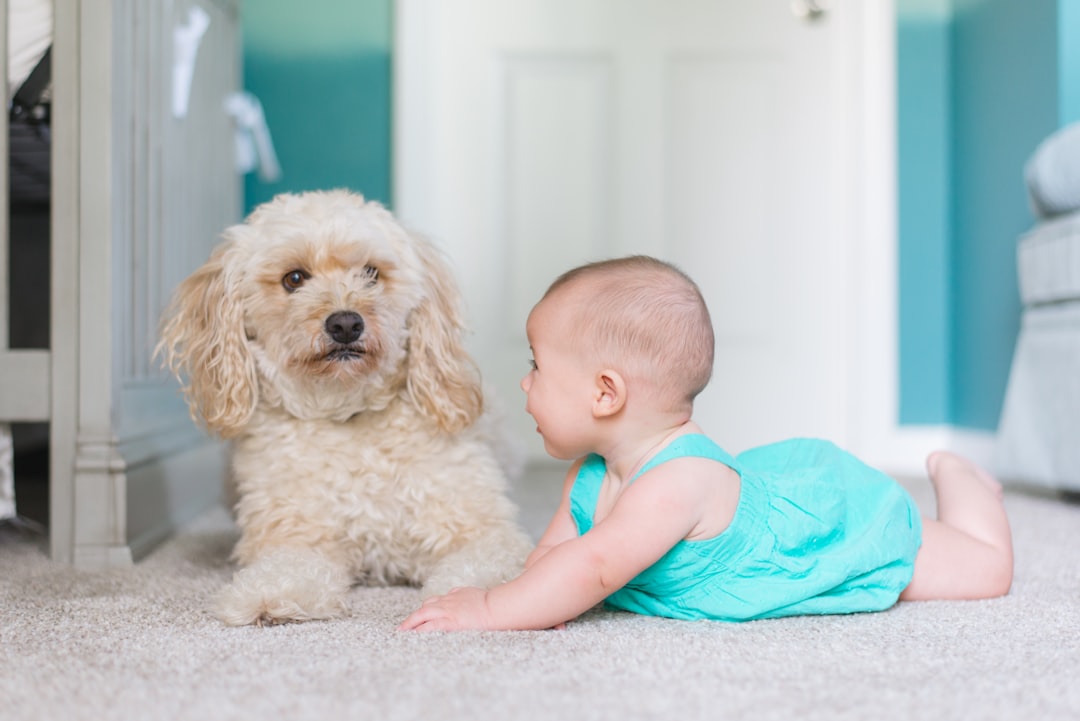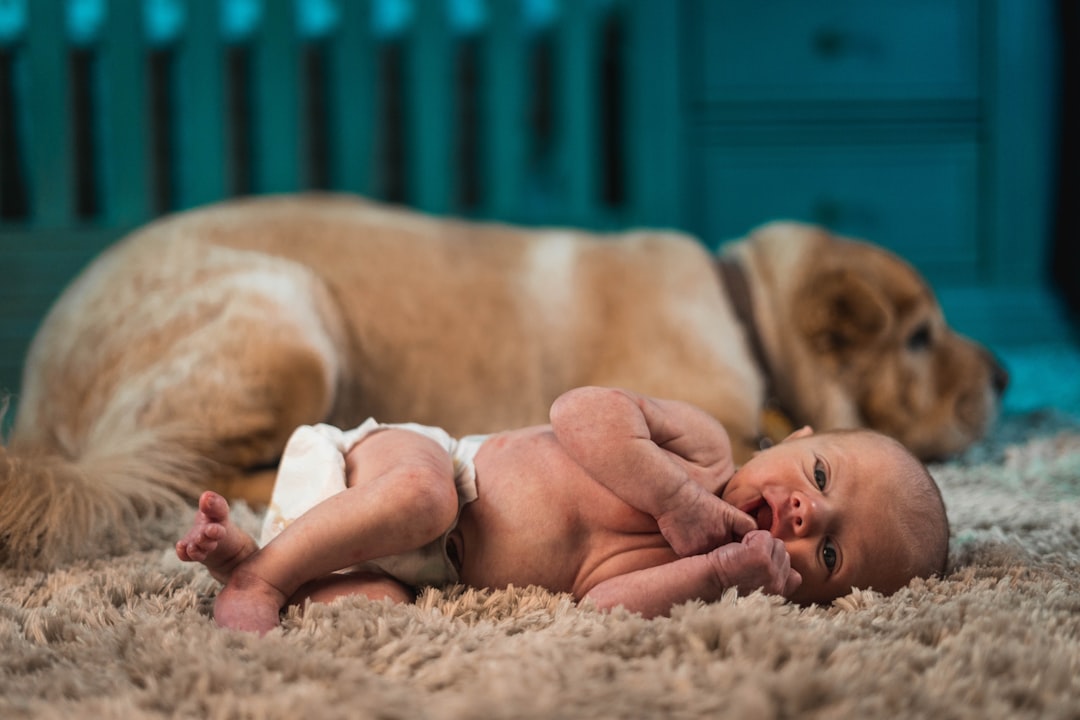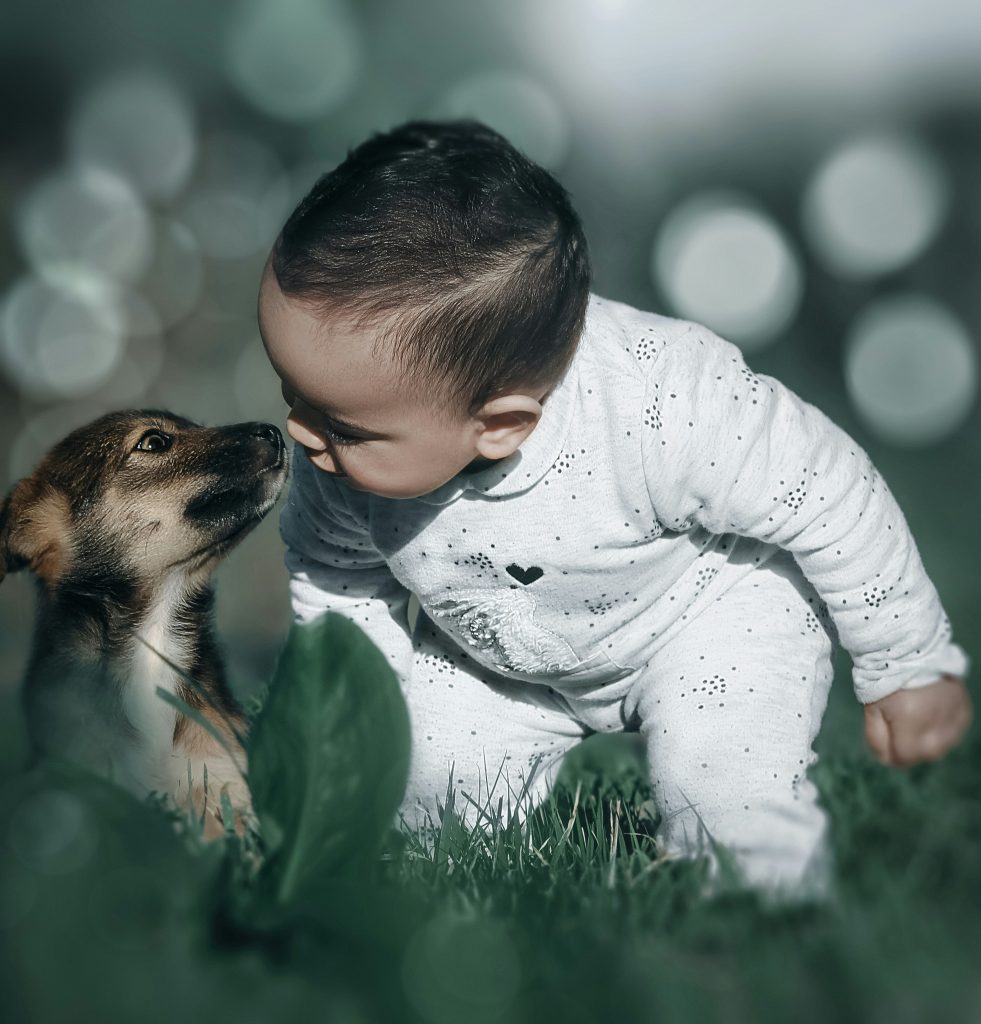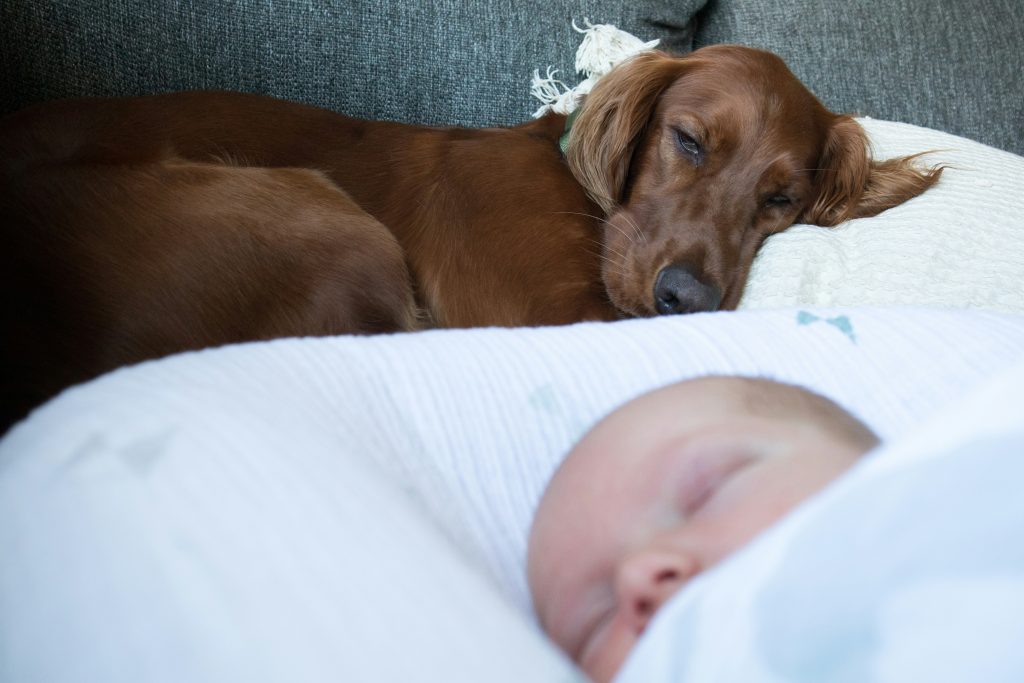Preparing Your Pup: A Guide to Welcoming a New Baby into Your Home
Preparing Your Dog for the Arrival of a New Baby: Learn how to properly prepare your dog for the arrival of a new baby to ensure a smooth transition and foster a harmonious relationship between your dog and the new family member.
Introduction: Importance of Preparing Your Dog for the Arrival of a New Baby
Dogs are highly perceptive animals that can sense changes in their environment, making it essential to prepare them for the arrival of a new baby. Understanding maternal behavior in dogs is crucial for providing veterinary advice to breeders and preventing behavioral issues in adult dogs. Proper preparation plays a crucial role in preventing displacement issues and ensuring a smooth transition for the entire family. Introducing your dog to the new baby in a controlled and positive manner is vital for establishing a harmonious relationship from the start. For example, gradually familiarizing your dog with the scent of the baby through baby items and clothing can help ease their transition when the baby arrives.
Understanding the emotional impact of changes in the household on your dog is essential for effective preparation. By recognizing the evolutionary bond between humans and dogs, you can better comprehend your dog’s reactions and adjust your approach accordingly. This understanding can aid in addressing your dog’s needs preemptively, creating a supportive environment for them before the baby’s arrival. Moreover, acknowledging your dog’s natural instincts and behaviors can guide you in tailoring the preparation process to suit their specific requirements, ensuring a smoother transition for both your pet and the new family member.
To further prepare your dog, it is crucial to establish new routines gradually to avoid causing any sudden shocks to their system. By incorporating small changes into your dog’s daily schedule, such as adjusting feeding times or walking routes, you can help them adapt more comfortably to the upcoming adjustments. Additionally, providing mental stimulation through interactive toys or puzzle feeders can keep your dog engaged and mentally active, reducing potential stress or anxiety as they acclimate to the new dynamics of the household. These proactive measures not only prepare your dog for the arrival of the baby but also contribute to a more positive and stress-free environment for everyone involved.
 Understanding Your Dog’s Needs and Behavior
Understanding Your Dog’s Needs and Behavior
Understanding your dog’s needs and behavior is crucial when preparing for the arrival of a new baby. Research has revealed that most dog breeds exhibit common maternal behaviors, highlighting the importance of recognizing and catering to your dog’s natural instincts. By acknowledging these innate behaviors, such as nesting and nurturing tendencies, you can better anticipate how your dog might react to the new addition to the family. For example, some breeds may be more protective, while others may be more curious and playful, requiring different approaches to preparation.
Moreover, canine maternal behavior plays a significant role in puppy development, emphasizing the necessity of addressing your dog’s emotional well-being before the baby arrives. Ensuring your dog feels secure and loved during this transition period can help prevent feelings of displacement or anxiety. One way to support your dog emotionally is by maintaining a consistent routine and providing reassurance through positive reinforcement and affection. By creating a safe and comforting environment for your dog, you can help them feel more at ease with the upcoming changes in the household dynamics. Additionally, recognizing the deep emotional bond between humans and dogs can provide insights into how your dog may perceive and respond to the new baby, allowing you to proactively address any potential stressors or concerns.
Preparing the Home Environment for Your Dog
When preparing your home for the arrival of a new baby, it is essential to gradually introduce changes to your pet’s environment to avoid overwhelming them. This can include creating physical barriers to certain areas of the house where the dog will not be allowed once the baby arrives, such as the nursery or playroom. By introducing these barriers early on, your dog can start getting accustomed to these limitations well before the baby’s arrival, reducing potential stress or confusion. Additionally, maintaining a consistent routine for your pet after the baby comes home is crucial. Dogs thrive on predictability, so even small changes to their daily schedule can have a significant impact on their behavior and well-being. Ensuring that feeding times, walks, and play sessions remain consistent can help your dog feel more secure during the transition period.
Moreover, setting up a designated space for your dog where they can retreat to when they need time alone can be beneficial. This area should be a safe and comfortable spot where your dog can relax and feel secure, especially when the household becomes busier with the new baby. Providing your dog with a comfortable bed, toys, and access to water in this area can help them associate it with positive experiences and encourage them to use it as a retreat when they need a break from the baby’s activities. By proactively creating this safe space, you are giving your dog a coping mechanism for dealing with potential stress or changes in their environment, promoting their well-being and overall adjustment to the new family dynamics.
Sensory Preparation for Your Dog
When preparing your dog for the arrival of a new baby, it is essential to engage in sensory preparation to help them acclimate to the upcoming changes. In addition to introducing your dog to new smells associated with the baby, such as baby lotion or powder, you can also consider playing recordings of baby sounds to desensitize them to these new auditory stimuli. For instance, you can play recordings of a baby crying or cooing at a low volume initially, gradually increasing the volume over time to help your dog become accustomed to these noises. By associating these sounds with positive experiences, such as receiving treats or engaging in playtime, your dog can learn to respond calmly to baby sounds when the time comes.
Moreover, practicing with a baby doll can be a practical way to familiarize your dog with the activities and interactions that will occur when the baby arrives. For example, you can carry the baby doll around the house, use baby-related items, and simulate scenarios like feeding or changing diapers. By guiding your dog through these simulated routines and rewarding them for gentle behavior, you can help them understand what to expect and how to behave around the new family member. This hands-on approach can make the transition smoother for your dog and reduce any potential anxiety or uncertainty they may experience when the baby comes home.
Training and Behavioral Adjustments for Your Dog
When preparing your dog for the arrival of a new baby, it is essential to focus on training and behavioral adjustments to ensure a smooth transition. Teaching specific skills like “leave it” and “gentle play” can significantly improve communication between you, your dog, and the new family member. For example, practicing the “leave it” command with your dog can prevent them from approaching or grabbing items that may be harmful to the baby, promoting a safe environment. Additionally, encouraging gentle play can help your dog understand appropriate interactions with the baby, emphasizing the importance of being calm and careful around the little one.
Incorporating mental stimulation and enrichment activities into your dog’s routine is another effective way to prepare them for the changes a new baby brings. Interactive toys, puzzle feeders, and regular play sessions can help keep your dog mentally engaged and content while you are occupied with the baby. By providing these outlets for mental stimulation, you can prevent boredom and attention-seeking behaviors in your dog, ultimately fostering a harmonious environment for the entire family. Moreover, closely monitoring your dog’s behavior and making necessary adjustments to their routine can proactively address any signs of stress, anxiety, or jealousy. For instance, if you notice your dog displaying undesirable behaviors, such as whining or pacing, modifying their exercise regimen or introducing calming activities can help alleviate their stress and promote a positive relationship with the new family member.
Introducing Your Dog to the New Baby
When preparing your dog for the arrival of a new baby, it is essential to gradually introduce them to the new family member. Allowing your dog to sniff baby items and clothing is a great way to familiarize them with the baby’s scent before the baby arrives. This sensory preparation can help ease your dog’s curiosity and reduce anxiety when the baby is finally home. For example, you can leave a piece of clothing or a blanket with the baby’s scent in an area where your dog can investigate it calmly. This simple act can start building positive associations between your dog and the baby, setting the stage for a smoother introduction.
Supervision is key during the first interactions between your dog and the baby. Keeping your dog leashed and the baby held securely allows you to control the initial meeting, ensuring safety for both the baby and your furry friend. By closely monitoring their interactions, you can intervene if needed and guide your dog’s behavior positively. Additionally, rewarding your dog for calm and gentle behavior around the baby reinforces the idea that good behavior leads to positive outcomes. Treats, praise, and affection can help your dog understand that being around the baby is a pleasant experience, encouraging desirable interactions and creating a harmonious relationship between your dog and the new family member [2].
Ongoing Supervision and Adjustment
Supervising your dog and the new baby continuously is crucial to ensure their safety and well-being, especially during the initial stages of their interaction. Dogs, no matter how well-behaved, can exhibit unexpected behaviors when faced with new or stressful situations. For instance, some dogs may become anxious or exhibit signs of jealousy when the attention shifts to the baby. By closely monitoring their behavior and interactions, you can promptly address any issues that arise, preventing potential conflicts and ensuring a harmonious environment for both your dog and the baby.
Moreover, maintaining patience and understanding throughout the adjustment period is fundamental in establishing a positive relationship between your dog and the new family member. Dogs are perceptive animals that can pick up on their owners’ emotions, so staying calm and composed can help reassure your dog during this period of change. By providing a sense of security and stability through your demeanor, you can help your dog feel more at ease and facilitate a smoother transition as they adapt to the new dynamics of the household. Remember, a patient and empathetic approach can go a long way in fostering a strong bond between your dog and the newest addition to your family.
Conclusion: Ensuring a Harmonious Relationship Between Your Dog and New Baby
Preparing your dog for the arrival of a new baby is a gradual process that requires patience and dedication. By starting early and incorporating small changes into your dog’s routine, you can help them adjust smoothly to the upcoming transition. For example, if your dog is not used to baby sounds, you can gradually introduce recordings of infant noises to help desensitize them and reduce their stress levels. This gradual exposure can make a significant difference in how your dog responds when the baby arrives, as they will already be familiar with the new sounds and less likely to be startled or anxious.
Consistent supervision is key when introducing your dog to the new baby. Even the most well-behaved dogs can act unpredictably in new situations, so it’s essential to closely monitor their interactions and be prepared to intervene if necessary. For instance, if your dog shows signs of stress or jealousy when the baby is around, taking immediate action to address these emotions can prevent potential conflicts and ensure a safe environment for both your dog and the baby. By staying attentive to your dog’s behavior and providing positive reinforcement for calm and gentle interactions, you can help build a harmonious relationship between your furry companion and the newest member of your family.



